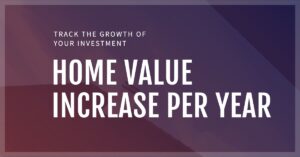If you've been following the housing market, you know it’s been a bit of a rollercoaster lately. It feels like we’re all holding our breath, waiting for things to change, especially if you're hoping to buy or sell a house soon. I’ve been watching these trends closely, and honestly, the latest news is a bit sobering. According to Fannie Mae's Economic and Strategic Research Group, existing home sales are expected to stay near their 30-year lows throughout 2025. Yep, you read that right.
Now, before you panic, let’s break down what this actually means, why it’s happening, and what you can expect if you're navigating this tricky market. I'll also throw in my two cents based on what I'm seeing out there.
Existing Home Sales Predicted to Remain at 30-year Low in 2025
What Does “Near 30-Year Lows” Really Mean?
First off, let's put this into perspective. Thirty years ago, in the early to mid-1990s, the housing market was a completely different beast. Mortgage rates were higher, and home prices were considerably lower than they are today. When we say “near 30-year lows,” we’re talking about a significant slowdown in the number of existing homes being sold compared to the last three decades. Basically, fewer people are selling their homes, and fewer people are buying them.
This means less movement in the market overall. Fewer opportunities for sellers to make a quick move and fewer options for buyers looking for their dream home. It paints a picture of a housing market that's, well, stuck.
Why Are We Stuck?
So, what's causing this standstill? Well, there are a few key factors at play, and they’re all interconnected like a messy ball of yarn.
- The “Lock-In” Effect: This is a big one. A lot of current homeowners have low mortgage rates – think 3% or even lower – from when the rates were at rock bottom. The thought of trading that in for a 6% or higher interest rate is a tough pill to swallow. This keeps people put. It’s like they are “locked-in” to their current homes, and they’re not eager to give up that low rate. This results in fewer homes hitting the market.
- High Mortgage Rates: Even though rates are predicted to decline modestly, the fact that they are expected to stay above 6% is a major hurdle. The cost of borrowing money is still high, which means higher monthly payments for homebuyers. This immediately pushes many buyers out of the market altogether, especially first-time buyers. In my experience, I've seen many families postpone their home buying plans because of this.
- Affordability Issues: It's not just the mortgage rates. Even if rates dipped a bit, home prices are still elevated in many areas. This combination of higher prices and high interest rates makes buying a home incredibly challenging. As Fannie Mae also notes, supply is still below pre-pandemic levels. It's a perfect storm of factors making it hard for many folks to get their foot in the door of homeownership.
Fannie Mae's 2025 Housing Market Predictions in Detail
Let's dig a little deeper into what Fannie Mae is predicting. They've laid out a few key trends to watch in 2025. Here’s a breakdown of their predictions and my take on each:
- Modest Decline in Mortgage Rates: They predict that mortgage rates will decrease slightly, but they will stay above 6%, with periods of volatility. This volatility is key to watch. Even with average higher rates, temporary drops might offer brief windows for buyers to jump in. As a real estate watcher, I think it’s crucial for those in the market to stay vigilant and be ready to move when those dips occur.
- Existing Home Sales Remain Near 30-Year Lows: This is the big one we’ve been talking about. The “lock-in” effect and affordability issues, they are all converging to keep activity subdued. We’re not expecting some massive wave of homes hitting the market anytime soon.
- New Home Sales as a Bright Spot: Here's a bit of good news. New home sales are expected to be stronger. Builders are actively targeting first-time homebuyers with new offerings. If you are open to new construction, that's something you can explore. But keep in mind this is limited to areas where building is possible and affordable.
- Decelerating National Home Price Growth: Fannie Mae predicts that national home price growth will slow down. While this doesn't mean a massive price drop, it could offer a bit of relief to buyers. I think this slow down is more of a return to normalcy and should be welcomed. It gives a bit of breathing room to the market.
- Multifamily Housing in a Holding Pattern: The multifamily housing sector, like apartments and rentals, is expected to remain stable. This is an area I think needs more attention because with fewer options to buy, rental becomes the only choice for many.
A Closer Look at Regional Differences
It's critical to understand that the housing market is not uniform. What’s happening in one area might be totally different in another. Fannie Mae points out some big regional differences:
- The Sun Belt: This is where construction has been active, and builders are focusing on first-time homebuyers. I've noticed more activity here with more development being built that’s creating an option to purchase new construction. You might see a little more movement in this market compared to other areas.
- The Northeast: This area is expected to remain constrained. Supply is already low and there is less room for new construction. This means prices might be stickier and competition for existing homes will likely remain high. This is a common experience for those of us who've been watching the northeast closely.
A Glimmer of Hope: Wage Growth
One encouraging thing I am seeing is Fannie Mae's mention that nominal wage growth is expected to surpass home price growth in 2025. This hasn't happened in over a decade. This means that, slowly but surely, people might see their income finally catch up to the price of housing. This could offer some much-needed relief to potential homebuyers, but it won't be an overnight fix.
What This Means For You
So, how should you interpret this data? Here's my take on it:
If you're a potential buyer:
- Be Patient and Vigilant: Don’t expect a drastic market change overnight. Keep an eye out for those temporary dips in mortgage rates and be prepared to act fast.
- Consider New Construction: If your area has new construction happening, explore these options. Builders are trying to lure in first time buyers with incentives, so you could find a good deal.
- Be Flexible on Location: If you can be flexible with your location, you might find more opportunities in areas that have more supply.
- Budget Carefully: It's even more critical than ever to budget realistically and understand your long-term financial obligations.
If you're a potential seller:
- Realize It's a Slower Market: Don’t expect your home to fly off the shelves immediately. You may need to be more patient.
- Price Competitively: With a constrained market, pricing accurately is key. Don't overprice your home, or it may sit for months.
- Consider Timing: If you can, timing your sale to coincide with periods of lower mortgage rates could help attract buyers.
For everyone else:
- Stay Informed: It’s crucial to stay updated on the latest market trends, especially if you’re thinking about a move in the near future. Things can change quickly, and staying informed can help you make better decisions.
- Prepare: Whether you’re a buyer or a seller, preparation is vital. Look at all your financial details and get pre-approved if you are thinking of purchasing.
My Final Thoughts
As someone who follows the housing market closely, I can tell you that these are challenging times. But, knowledge is power. Knowing what to expect can help you navigate these challenges more effectively. The housing market is complex, and it's important to look at data, consider your own local situations, and adjust your expectations. I believe that the market will eventually turn around, but it may be a while before we see a big shift.
Here’s a summary of the data we discussed:
| Prediction | Detail | My Take |
|---|---|---|
| Mortgage Rates | Modest decline, but above 6%, with volatility | Watch for temporary dips for opportunities |
| Existing Home Sales | Near 30-year lows | Don't expect a rapid market rebound |
| New Home Sales | Stronger than existing homes | Explore new construction if possible |
| National Home Price Growth | Decelerating | A welcome return to normal |
| Multifamily Housing | Remains in a holding pattern | More attention is needed to alleviate stress for those who can't buy |
| Regional Differences | Sun Belt stronger, Northeast constrained | Understand your local market conditions |
| Wage Growth | Expected to outpace home price growth | A positive sign for potential buyers, but gradual relief |
The data from Fannie Mae paints a picture of a market that's sluggish and will likely remain so through 2025. The combination of high mortgage rates, affordability issues, and the lock-in effect are all contributing to a constrained housing market. While things may change slowly over time, it's clear that we're in for more of the same for now. I hope this in-depth view of the market will help you in making a decision with your home buying and selling needs.
Partner with Norada, Your Trusted Source for Turnkey Investment Properties
Discover high-quality, ready-to-rent properties designed to deliver consistent returns. Contact us today to expand your real estate portfolio with confidence.
Reach out to our investment counselors:
(949) 218-6668 | (800) 611-3060
Recommended Read:
- Lower Mortgage Rates Will Reignite the Housing Demand in 2025
- NAR Predicts 6% Mortgage Rates in 2025 Will Boost Housing Market
- Housing Market Forecast for the Next 2 Years: 2024-2026
- Housing Market Predictions for the Next 4 Years: 2025 to 2028
- Housing Market Predictions for Next Year: Prices to Rise by 4.4%
- Housing Market Predictions for 2025 and 2026 by NAR Chief
- Real Estate Forecast Next 5 Years: Top 5 Predictions for Future
- 2008 Forecaster Warns: Housing Market 2024 Needs This to Survive
- Real Estate Forecast Next 10 Years: Will Prices Skyrocket?






